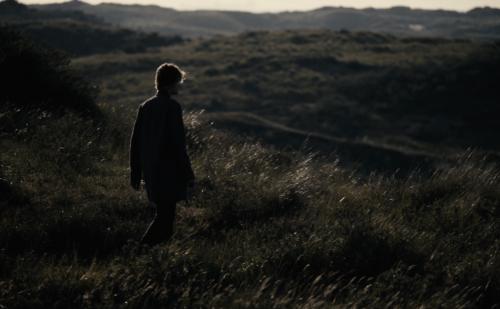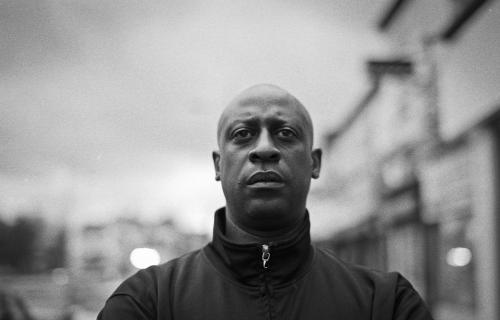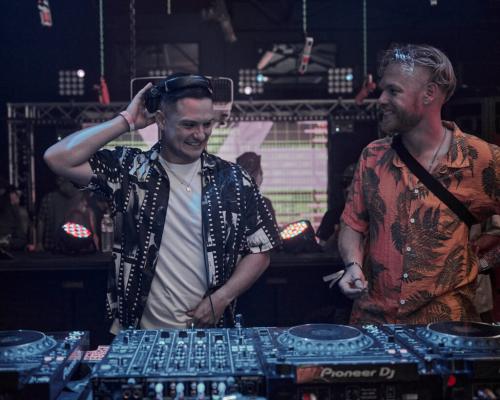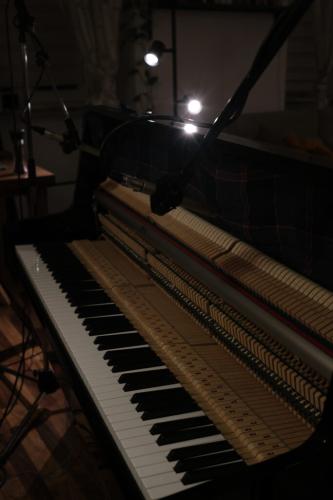
Who The Hell Is Sorza
His album, Pillars, came out this August and he’s now ready to bring his unique sound to the club scene. While you may know him as one half of the D&B duo The Outsiders, Sorza’s solo work takes a more experimental direction. In Pillars, he draws on Bulgarian folklore, revisits half-time rhythms, and finds inspiration from artists like Ivy Lab and Lorn.
To fully experience this album, we recommend listening from start to finish rather than shuffling through the tracks. Sorza weaves together a cohesive ten-track journey, complete with build-ups, perfectly timed breaks, and a satisfying resolution; the perfect ingredients for an album.
Following Pillars’ release, Sorza expanded his sound with a special release featuring an orchestral version of his track ‘Visions of what could be,’ adding a new layer of depth and emotion to his already evocative sound, as well as a full Audiovisual set which premiered earlier this month.
Congratulations on your album, ‘Pillars’. How did you start?
The Pillars project began in March 2023, with around 30 demos submitted. It was interesting because, after looking at all the tracks, I realised they could be grouped into distinct categories or “pillars”. That’s where the album title came from. With this release, I wanted to showcase these different facets of myself. The title also ties in perfectly with the artwork, where each isolated piece represents a pillar, symbolising the various sides of my sound.
The first single, ‘Does it hurt me,’ and the B-side, ‘Sonyo’ (the first pillar), reflect my deep interest in non-Western music cultures. For ‘Does it hurt me’ I even created my own microtonal scale and incorporated the çifteli, a beautiful Albanian instrument that I’m currently learning to play. The B-side, ‘Sonyo,’ is a reimagining of a track previously released by the Bulgarian electronic band, The Science, and draws inspiration from a Bulgarian folklore poem. The second pillar explores the current bass music scene. With ‘Never,’ I wanted to create something that aligns with the modern production aesthetic and style that’s trending right now.
On the other hand, tracks like ‘Take me’ and ‘Hiding in the sea’ are a nod to my roots and what initially inspired me as an artist. Which I think is the third pillar. ‘Take me’ is a bit of a throwback to older styles and was originally titled ‘Take me back to 17’. This refers to the year I really dove into bass music, discovered halftime, and got hooked on tracks from labels like Division, formerly run by Noisia. I was also 17 at that time. In total, there are three main pillars in the project, though some tracks blend elements from different pillars to create something new and hybrid.
You just released your AV set for Pillars. Can you tell us a bit more about that?
Alongside my work as Sorza, I also have an audiovisual collaboration called Arsyn with one of my friends, Aidan Mulcahy. Together, we’ve developed a series of visualisers specifically designed for the tracks that are featured in the AV set, which adds an exciting and immersive dimension to the project. The AV set showcases all of my music, including unreleased bootlegs, remixes, and tracks that haven’t been released yet. I think it’s a great way to wrap up the Pillars project. The set premiered last week and if you’re a fan of Pillars (and even if you’re not) then I definitely recommend you check it out on the Vision and Sorza YouTube channels.
Why did you choose VISION as a label?
Choosing VISION as the label for this project came as a very natural decision. I’ve known the Noisia team since 2016-2017 through my work with The Outsiders, and we had already collaborated with VISION. So, when the time came to release my solo project as Sorza, it made perfect sense to continue that partnership. Now that I have a clear vision for my solo sound, it feels right to share this new direction with a label I trust and have a history with.
With Pillars, I want to introduce something fresh to the scene, and I believe VISION is the ideal place for this kind of music. It’s also the label that first inspired me when I entered the scene at 17, so releasing this with them feels like a full-circle moment. This album went through a lengthy and intense A&R process, and I’m thrilled with the final outcome; I believe we’ve crafted something beautiful. For now, though, I’m eager to translate the music I make into a club setting. On another front, I’m also working on a significant album that will focus entirely on the listener’s experience.
You talked about how you’re also a part of The Outsiders. How does Sorza differ from that project?
As a drum & bass artist, I’ve found that most people aren’t particularly interested when you experiment with different genres. A significant portion of what I create as Sorza focuses on half-time tempos, but I don’t limit myself to just one genre. I explore various BPMs, styles, and production aesthetics—something I felt I couldn’t fully embrace within drum & bass. Now I feel free to step outside those limitations. I want to develop this project in a way that allows me to produce tracks more freely, without being confined to a single formula or worrying about whether the audience will be receptive. That sense of artistic freedom is something I’m eager to cultivate.
The Outsiders for drum & bass, Sorza for all the rest, then?
Most likely, yes. I created a drum & bass flip of my ‘Creating an Oasis’ remix, which I only released on SoundCloud. However, it doesn’t make much sense for me to pursue drum & bass as Sorza. I want to keep my projects as separate entities. I started this one with a specific vision, and returning to drum & bass now would feel a bit odd, though I’m not ruling it out completely. I would love to do a Sorza drum & bass set because it would be very different from what I do as The Outsiders.
You want to create more club music. Where did that feeling start?
It feels like we’re experiencing a revival of club music right now in both the mainstream and the underground scenes. For example, Beyoncé’s album RENAISSANCE and, of course, Brat, from Charli XCX — club music is becoming increasingly popular. In the bass scene, I’ve noticed acts with such a music background pushing this style in ways that intrigue me. That’s why I want to explore this side of bass music further. I want to create more dynamic sets that transition between club music and half-time, allowing for better build-ups.
When you play at the right clubs, the audience really gets what you’re trying to do, and those are the places where I want to perform and that’s the kind of music I want to make. Although The Outsiders released a half-time track, that trend was only a brief hype in the drum & bass scene back in 2017. We produced two half-time tunes for our 2222 EP, but quickly realised that people primarily see The Outsiders as a drum & bass duo. That’s when we decided to reserve our more multi-genre tracks for our solo projects.
Where do you get your inspiration?
I draw inspiration from artists like Ivy Lab, Nikki Nair, Thys, COIDO. Ivy Lab, especially, their label made a significant shift in their direction. Initially, they focused on half-time, but recently they’re leaning more towards club music. I find this transition both intriguing and inspiring. They are now in a position where they can experiment freely with their sound, which is something I aspire to achieve.
The older half-time Ivy Lab-style influences several tracks on the Pillars album. I feel that sound is often overlooked today, which is a shame. A lot of the music I create has its roots in halftime beats and electronic hip-hop. Recently, I started a live collaborative performance with Dutch rapper Keenan Mundane. I essentially bootleg his instrumentals and mix the tracks while he raps. Keenan has a raw, primal energy when he performs, and in our live shows, I really feel that connection to the hip-hop genre that influences much of the other music I produce.
‘Does it hurt me’ and ‘Take me’ are two examples that incorporate this older style, yet they have been modernised with the production techniques and aesthetics.
Ultimately, I don’t want to rely solely on older sounds. With larger projects, I can showcase all the aspects of my musical vision, which is a crucial part of how I want people to perceive Sorza.
You really want people to see all sides of you, that’s beautiful! What other motivations did you have while making this album?
I have a bit of an obsession with storytelling, and I love weaving narratives into my music, especially for larger projects like this. I frequently listen to albums because I appreciate how one song can build on the next. It was a key goal for me with Pillars to avoid making it feel like a mere compilation.
This project took over a year to develop, and I aimed to create a clear, melodic opening that transitions into more eclectic sounds, culminating in a climax followed by an aftermath. The entire album revolves around this concept. Initially, there wasn’t an interlude between ‘Sonyo’ and ‘Never,’ but the transition felt too abrupt, so I composed an additional track, ‘At will,’ as an interlude to smooth it out.
I put a lot of thought into the progression of Pillars. Ideally, I want listeners to experience it from start to finish without shuffling the tracks, as that allows them to appreciate the story as I intended. Having 10 songs was essential for crafting this narrative. I find that with a shorter project, it’s much more challenging to create a full-circle moment. However, I also recognise the value of smaller releases; I’m not someone who likes to hold onto a project for an entire year. Overall, I’m really pleased with how this project turned out, and I’m glad it aligns with VISION’s … well, vision (ha).
Where does your interest in storytelling come from?
I consider myself more of a composer than just a producer. For me, composition is all about progression and the direction a piece takes. When I write songs, I strive to create unique experiences each time. While some tracks may have similar first and second drops, I believe there should always be a significant difference between them. It’s essential for each moment to feel distinct and to take the listener on a journey.
You can create a sense of progression within a single song, but I like to extend that narrative across an entire project, making the overall journey feel even more expansive. While some listeners might return to an album for one or two standout tracks, I aim for my audience to appreciate the album as a cohesive experience, drawn in by the flow and evolution of the music throughout.
Any last thoughts?
I want to thank everyone who supported and guided me through this entire process. The A&R journey was quite lengthy, and I learned so much from the whole process Big up to Jaap & Nik! I want to thank Aidan Mulcahy for creating all the visual content for the album and Matvey Murashko for capturing the images that brought those visuals to life. Additionally, I’m grateful to Jozef van der Veen, Jukaa—the other half from The Outsiders—who provided invaluable support behind the scenes and motivated me to put forth my best efforts for this project, as well as to my partner Sarah Smit, who helped me out with a bit of everything. I’ve received an enormous amount of help from various people, and I truly appreciate every single one of them.

























Comments
0